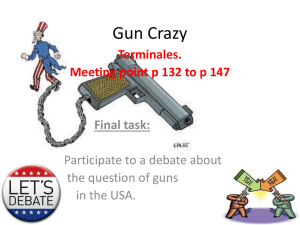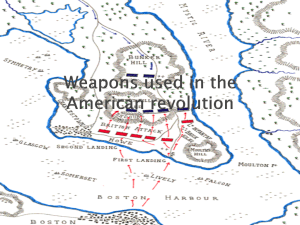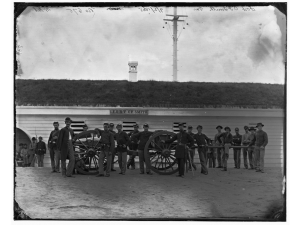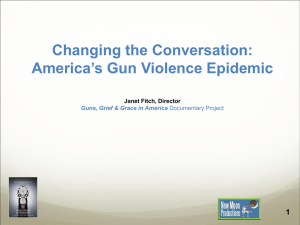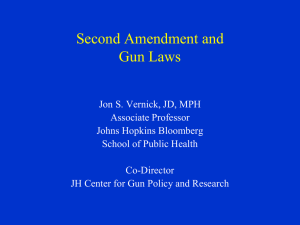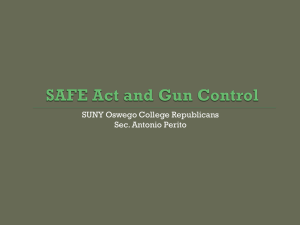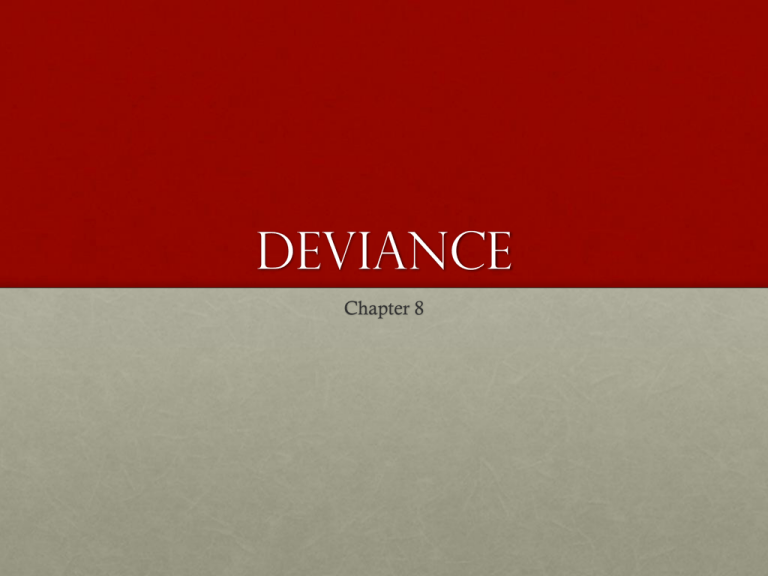
Deviance
Chapter 8
Social Control
• The term social control refers to techniques and strategies for preventing
deviant human behavior. Social control occurs in families, peer groups, and
bureaucratic organizations. Members of society are expected to act properly.
•
Sanctions, which may be either penalties or rewards, help to induce behavior
consistent with social norms.
• Conformity is defined as going along with one’s peers even though they have
no special right to direct our behavior.
• Obedience is defined as compliance with higher authorities
• Law is defined as governmental social control and reflects continually
changing standards of what is right and wrong.
• Control theory: our connection to members of society leads us to
systematically conform to society’s norms
Deviance
• Behavior that violates the standards of conduct or
expectations of a group or society.
• Deviance involves the violations of group norms that
may or may not be formalized into law. It is a
comprehensive concept that includes not only criminal
behavior, but also many actions not subject to
prosecution. Deviance can be understood only within
its social context.
Positive Deviance
• Positive Deviance is an approach to behavioral and
social change based on the observation that in any
community, there are people whose uncommon but
successful behaviors or strategies enable them to find
better solutions to a problem than their peers, despite
facing similar challenges and having no extra resources
or knowledge than their peers. These individuals are
referred to as positive deviants.
Individual Writing
• Write down acts (playing baseball) or attributes (being
a student) that you consider to be “deviant”.
• Try to think of personal examples (e.g., about you or
someone you know).
• Keep them short.
Types of Crime
• Crime: violation of criminal law, for which government applies formal
penalties. Laws divide crimes into categories - Severity of offense, Age of
offender, Potential punishment and Jurisdiction
• Victimless crimes: willing exchange among adults of widely desired, but
illegal, goods and services
• Professional Crime - person who pursues crime as a day-to-day occupation
• Organized crime: group that regulates relations between various criminal
enterprises involved in illegal activities
• Transnational crime: crime that occurs across multiple national borders
•
Slavery, sex trafficking, drugs, stolen art
• White Collar and Technology- White collar crime: illegal acts committed
in the course of business activities, often by affluent “respectable” people
•
•
Computer crime: use of high technology to carry out illegal activity
Corporate crime: any act by a corporation that is punishable by the government
• In 2009, baseball fans
were shocked by the
revelation that, like
several other baseball
greats, Alex Rodrigues
had used banned
substances and lied
about it.
The Death Penalty in the
United States and Worldwide
• The Setting
• Less than 50% of nations allow death penalty
• 94% of executions in 2005 took place in China, Iran, Saudi
Arabia, and U.S.
• U.S. Supreme Court ruled lower courts must consider
circumstances of crime and character and previous record
of defendant before imposing death sentence
• Execution cannot involve needless pain or suffering and
cannot be grossly out of proportion to the severity of the
crime
Executions by Sate since 1976 -2007
Gun Statistics
•
•
•
•
•
In 2008, 10,886 or 67% of crimes were committed with firearms.
Based on survey data from a 2000 study,[ U.S. civilians use guns to defend
themselves and others from crime at least 989,883 times per year.
A 1994 survey conducted by the U.S. Centers for Disease Control and Prevention
found that Americans use guns to frighten away intruders who are breaking into
their homes about 498,000 times per year.
Numerous presidents have been killed by gun violence including Abraham Lincoln
in 1865, James Garfield in 1881, William McKinley in 1901 and John F. Kennedy
in 1963. In 1981, there was an assassination attempt on Ronald Regan’s life.
Secret Service agent James Brady was killed in the attack. The Brady Handgun
Violence Prevention Act was signed into law by President Bill Clinton in 1993 in
honor of him. For the first time, instituted federal background checks on firearm
purchasers and a five-day waiting period.
A 1982 survey of male felons in 11 state prisons dispersed across the U.S. found:
• 34% had been "scared off, shot at, wounded, or captured by an armed victim"
• 40% had decided not to commit a crime because they "knew or believed that the
victim was carrying a gun"
• 69% personally knew other criminals who had been "scared off, shot at,
wounded, or captured by an armed victim”
Gun Control Debate
(Making It Harder To Get A Gun)
“Guns purchased for self-defense are not a particularly good
idea. A citizen confronting a burglar in his or her home is more
likely to be injured if a gun is involved. In addition over 200,000
guns are stolen each year from private residents.”
“Handguns are not a major cause of injuries and deaths in the U.S.
Far more Americans die from cardiovascular disease, cancer,
diabetes, and accidents involving cars, falls, drownings and fires. For
example, cars kill 50,000 people a year, should they be outlawed?”
“Public opinion polls reveal that an overwhelming majority of
Americans favor restrictions and controls on gun ownership.”
“Public opinion polls reveal that a majority of Americans believe that
the Constitution guarantees each person the right to own a gun.”
“The 2nd Amendment does not guarantee a citizen the absolute
right to own a handgun. The 2nd Amendment only applies to
state militias, not individuals. The Supreme Court and lower
federal courts have consistently upheld this interpretation. No
gun control measure has ever been struck down as
unconstitutional under the 2nd Amendment.”- Handgun
Control, INC.
“Criminals will not abide by a waiting period regulation. They will
steal or obtain guns illegally. National studies have revealed that onesixth of gun-owning felons obtained handguns from a licensed
firearms dealer. The Brady law forbids the sale of guns to the
mentally ill, but these people often cannot be identified through
computer checks due to the confidentiality of medical records.” National Rifle Association
In 2006, Mayor Bloomberg joined with Boston Mayor Tom
Menino to found the coalition of Mayors Against Illegal
Guns. Now more than 500 mayors strong, the coalition
promotes common-sense strategies to help keep Americans safe.
One major policy focus of the coalition is the effort to close the
Gun Show Loophole. This gap in federal legislation gives
people who would not be able to legally obtain a gun an easy
way to buy one at a gun show without having to pass a
background check. - NYC Criminal Justice
“They'll say it's the violent movies and video games that are
responsible. Last time I checked, the movies and video games in
Japan are more violent than ours – and yet usually fewer than 20
people a year are killed there with guns – and in 2006 the number was
two! Others will say it's the number of broken homes that lead to all
this killing. I hate to break this to you, but there are almost as many
single-parent homes in the U.K. as there are here – and yet, in Great
Britain, there are usually fewer than 40 gun murders a year.” Michael Moore, Director
182 weapons turned in at
Brooklyn gun buy-back
(December 2011)
Officer Peter Figoski was killed by a gun that should not have
been on the street. Saturday, just by coincidence and less than
a mile from where the veteran cop was gunned down, the
NYPD held one of its gun buy-back programs. Anyone could
turn in a gun with no questions asked. 182 weapons were
turned in. A complete breakdown of the firearms that were
surrendered today is as follows:
58 Semi-automatic handguns, 95 revolvers, 1 sawed-off
shotgun, 5 shotguns, 2 assault weapons, 7 rifles, 14 others (zip
guns/BBs/starters)
Since its inception in July 2008 the NYPD/Clergy Gun BuyBack program has taken over 7,300 weapons off the
Streets…Those who brought in guns received a $200 bank
card per gun or a $20 bank card for any shotgun or rifle.
“Their lives were cut short because a deranged man was able to access weapons in a nation
that cares more about its guns than its children. ‘If there isn’t some kind of change in the
national consciousness by 6 and 7-year-old children being gunned down in the sanctity of
their school, then I think we have lost true north in this country…Our compass is broken.’
But these words have gone largely unheeded (ignored). How can that be? Her home state of
Connecticut did approve a package of laws that included adding more than 100 guns to a list
of banned assault weapons, banning armor-piercing bullets and putting limits on gun
magazines. Maryland, New York, Delaware, California and Colorado also tightened their
gun safety laws, many by expanding and improving background checks….Progress, however
hard-won, proved to be limited...Instead of a developing national consciousness, we see it
divide on America’s gun culture … Alabama, Arizona, Arkansas, Idaho, Kansas, Kentucky,
Maine, Mississippi, North Dakota, Oklahoma, South Dakota, Tennessee, Utah, Virginia,
West Virginia and Wyoming have approved laws loosening gun restrictions in the past year.
Kansas has decided to stop enforcing all federal gun laws. Guns are now allowed in North
Dakota churches, Kentucky zoos, South Dakota schoolrooms, Wyoming courtrooms and
public college campuses in Arizona. …How can this be? The gun industry, the National Rifle
Assocation and its fabulously funded allies can exert such absolute power on the local, state
and federal level because, in the end, the vast majority of citizens who don’t share their views
also don’t care (or have the money) enough to stop them. When it comes to gun deaths in
America, even a massacre like the one in Newtown only claims a fraction of the actual lives
lost. Using data from the Center for Disease Control, Slate magazine estimated that as of
November 6, 29,576 people died from gunshots in the United States since the massacre at
Sandy Hook.”
• -The Jewish Daily (November 2013)

